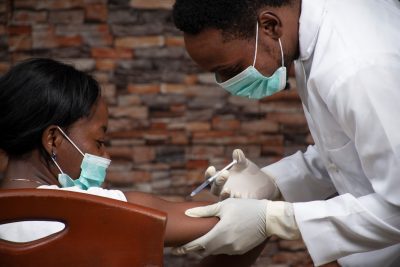The Pandemic’s Impact on Pediatric Health
The COVID-19 pandemic has dramatically transformed our understanding of public health, particularly when it comes to pediatric health on protecting children. As new variants emerge and scientific understanding evolves, parents face increasingly complex decisions about vaccination and child protection.
Epidemiological Landscape
Recent Centers for Disease Control and Prevention (CDC) data reveals the critical importance of pediatric vaccination strategies. Children, while statistically less vulnerable to severe COVID-19 outcomes, remain an essential population in comprehensive pandemic management.
Vaccine Development Insights
Scientific Foundation Moderna and Pfizer-BioNTech vaccines are revolutionary in the field of immunology, utilizing messenger RNA (mRNA) technology to instruct cells to produce proteins that trigger an immune response. These vaccines are designed to be highly effective and can be adapted quickly to respond to emerging diseases, making them particularly important for pediatric protection.
Comprehensive Protection Mechanisms
Vaccine effectiveness is not just about preventing illness; it provides a multifaceted approach to health:
- Reducing hospitalization risks: Vaccines help prevent severe infections that would require hospital care, significantly lowering strain on healthcare systems.
- Minimizing severe illness potential: Vaccinated individuals are much less likely to develop serious illness, even if they contract the virus.
- Enhancing immune system resilience: The vaccines stimulate the immune system to prepare for future exposures, making the body more resistant to infections.
- Preventing potential long-term health complications: Vaccines help reduce the risk of developing chronic conditions or health issues caused by infections, such as lung damage or heart problems.
- Supporting broader community health strategies: By vaccinating large populations, the spread of infectious diseases is controlled, benefiting society as a whole.
Parental Decision-Making Dynamics
Understanding parental attitudes toward vaccination is crucial in increasing vaccination rates:
- 20% demonstrate immediate vaccination support: A portion of parents are open and proactive about vaccinating their children as soon as vaccines are available.
- 28% prefer cautious observation approaches: Some parents prefer to wait and see how the vaccine performs in the general population before deciding.
- 27% express significant vaccination hesitancy: There is a segment of the population that is skeptical about the vaccine, raising the need for clear communication and education.
- 11% consider vaccination only under specific circumstances: A small number of parents are open to vaccinating, but only under certain conditions or after certain assurances.
Immunological Response Mechanisms
These vaccines work by engaging the body’s immune system through:
- Precise genetic material manipulation: The mRNA instructs cells to produce viral proteins that are recognized as foreign, prompting an immune response.
- Targeted spike protein simulation: The vaccines mimic the virus’s spike protein, allowing the immune system to recognize and fight off the virus without exposure to the full virus.
- Rapid antibody production stimulation: The immune system is quickly activated to produce antibodies that can neutralize the virus.
- Comprehensive immune system preparation: The vaccines prepare the immune system to fight off the virus more effectively should future exposure occur.
Safety and Efficacy Considerations
- Extensive clinical trial protocols: Before approval, the vaccines undergo rigorous testing in large clinical trials to ensure safety and efficacy.
- Comprehensive FDA review processes: Vaccines are reviewed by the U.S. Food and Drug Administration (FDA) for safety and effectiveness before they are authorized for public use.
- Continuous monitoring systems: After approval, vaccines are still monitored for adverse effects through surveillance systems.
- Transparent research methodologies: The vaccine development process is made public to ensure transparency, and findings are available for peer review.
- Longitudinal patient tracking: Ongoing studies track the long-term effects of vaccination, ensuring that any delayed responses are identified and addressed.
Potential Physiological Responses
Though vaccines are generally safe, some temporary side effects may occur:
- Mild temperature variations: Some individuals may experience a slight fever as the body responds to the vaccine.
- Localized injection site responses: Common reactions include redness, pain, or swelling at the injection site.
- Temporary muscular discomfort: A sore arm or other muscle aches may occur as a normal response.
- Short-duration fatigue: Some individuals feel fatigued for a short time after vaccination as the immune system reacts.
- Minimal inflammatory reactions: These responses are usually short-lived and indicate the immune system is working to protect the body.
Practical Implementation Strategies
Access to vaccines can be streamlined through various channels:
- Local health department consultations: Parents can reach out to local health agencies for information about vaccine availability.
- Digital vaccination databases: Online tools and platforms can assist in tracking vaccination schedules and reminders.
- Comprehensive healthcare provider networks: Pediatricians and family doctors play a critical role in providing vaccinations and counseling parents on vaccine benefits.
- Insurance-supported vaccination programs: Health insurance often covers vaccination costs, making it more accessible.
- CDC Vaccines for Children initiative: This federal program provides free vaccines to eligible children, ensuring broader access.
Critical Eligibility Parameters
Vaccination considerations are tailored to each individual:
- Age-specific dosage requirements: Vaccines are administered in doses appropriate to a child’s age to ensure maximum efficacy.
- Comprehensive health background assessment: Pre-vaccination screenings ensure that children are healthy and suitable candidates for the vaccine.
- Potential allergic reaction screenings: Some children may be more sensitive to vaccine ingredients, necessitating screenings prior to administration.
- Individualized medical consultations: Parents are encouraged to consult with healthcare providers to address any concerns or unique health needs before vaccinating.
Technological Innovation Landscape
The future of vaccines is shaped by advanced technology:
- Advanced laboratory-created mRNA technologies: This cutting-edge method allows for rapid development of vaccines and can be adapted to new diseases quickly.
- Precise genetic material engineering: Technology allows for precise modification of genetic material to trigger the desired immune response.
- Sophisticated viral protein understanding: Advanced knowledge of viral structures helps target the most vulnerable parts of the virus for vaccine development.
- Targeted immunological programming: Genetic engineering is used to tailor immune responses for maximum effectiveness and safety.
Broader Public Health Implications
Vaccination goes beyond individual protection:
- Community immunity development: Widespread vaccination helps create herd immunity, reducing the overall spread of diseases.
- Transmission risk reduction: By preventing the spread of infections, vaccines help lower the chances of outbreaks.
- Comprehensive population health management: Vaccination is a critical tool in controlling infectious disease rates within populations.
- Long-term pandemic mitigation strategies: Effective vaccination campaigns are essential for ending pandemics and preventing future outbreaks.
Global Health Perspective
International organizations emphasize the importance of equitable access:
- Equitable vaccine distribution: Efforts to ensure vaccines are available in all parts of the world help prevent health disparities.
- Continuous research investments: Global funding supports the development of new vaccines and improved delivery methods.
- Cross-border collaborative approaches: Countries and organizations must work together to manage global health challenges and ensure widespread vaccine access.
- Adaptive response frameworks: Health organizations adapt their strategies to respond to emerging health threats globally.
Psychological Considerations
Making informed vaccination decisions involves both intellectual and emotional engagement:
- Scientific literacy: Parents need to understand the science behind vaccines to make informed choices.
- Emotional intelligence: Recognizing and addressing concerns in parents and communities helps to reduce vaccine hesitancy.
- Evidence-based reasoning: Vaccination decisions should be made based on data and scientific research, rather than fear or misinformation.
- Open communication with healthcare providers: Honest, open dialogue between parents and doctors can help answer questions and alleviate concerns.
Conclusion
Pediatric COVID-19 vaccination represents a nuanced, scientifically robust approach to protecting children’s health. By understanding complex immunological mechanisms and leveraging advanced medical technologies, parents can make informed decisions supporting their children’s well-being.
The ongoing journey of pediatric health protection demands continuous learning, compassionate understanding, and adaptive strategies.















